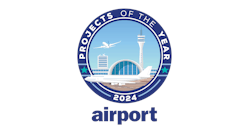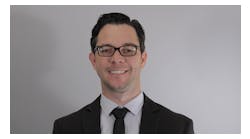The continued increase in international business jet flying is pacing Part 91 operations these days. Consider: Argus International’s January 2014 Business Aircraft Activity report shows large cabin bizjet departures in North America rose 9.7 percent from January 2013 through January 2014. It’s precisely these aircraft that shoulder the lion’s share of the load internationally.
A Dec. 16, 2013 New York Times story quotes National Business Aviation Association president and chief executive officer Ed Bolen as saying, “The segment of business aviation that has grown the fastest in the last five years is the ultra-long-range jets that are capable of flying halfway around the world.”
While these long-range flying machines make it possible to access far-flung pieces of the planet in one fell swoop, they – in an increasing number of cases – also make it imperative that the companies operating those aircraft possess safety management systems (SMS).
“According to the ICAO requirements everyone will need to have an SMS program,” says Richard Komarniski, president of Canadian-based Grey Owl Aviation Consultants. “As we’ve seen in the [Part] 91 world, most corporate operators [have] already gone ahead and implemented SMS in order to facilitate international travel. You’re not allowed to operate into some … countries unless your flight department has an SMS program.”
Komarniski says corporate aircraft are already getting ramp-checked for SMS documentation in places such as France, Barbados, and the Cayman Islands.
More to it than access
The director of maintenance for a Part 91 operator of heavy business jets acknowledges SMS is the price of admission to some key international airfields these days. While “that’s correct, there are some entities that [already] require it,” he argues the real value of a safety management system goes far deeper. An SMS impels people “to actually recognize safety and understand risk.”
Be the operation international or domestic, corporations which employ operators to ferry their employees to oft-time out-of-the-way job sites insist the people flying and maintaining the aircraft have safety management systems underpinning their operations. Komarniski says in the United States some large rotary-wing operators possess SMS “because it’s a customer requirement. SMS has been a customer requirement for probably 10 or 12 years” of major petroleum companies.
North of the border he says smaller operators who aren’t required by Transport Canada to have an SMS are nonetheless “being audited by mining companies to see if they have an SMS program before they allow their employees to be transported in their [aircraft].”
This emerging SMS ethic extends beyond the hangar doors of corporate flight departments, and the boardrooms of companies looking to minimize risk to their employees. Although not yet mandated by Federal Aviation Administration regulation, it’s winnowing its way into Part 135 charter and Part 145 repair shop operations.
“Looking at the landscape, we can see the regulations coming,” says Tom Burt, executive vice president and chief operating officer for Duncan Aviation’s Part 145 repair station in Battle Creek, MI. That’s why Duncan decided to go ahead and “build our own SMS.”
The company’s Lincoln, NE, Part 135 charter operation already had an SMS, providing some “experience to draw on,” says Burt. But Duncan didn’t try to superimpose the Lincoln example up on Battle Creek. 145 ops are “a bit of a different animal,” says Burt. “Our [repair shop] business has a very mature quality control system … We’ve been fine-tuning it and tweaking it for many years now.”
Waiting on the FAA
What Duncan Aviation doesn’t want to do is throw out safety systems that work in pursuit of compliance of regs that haven’t yet been issued. “It’s a danger,” says Burt. “Some of my friends in the 121 business have gone through setting up SMS. And it seems some of them haven’t been as effective as they would like.”
That’s one reason folks like Dan Lane, chief of inspection and FAA accountable manager for Atlanta-based Epps Aviation’s 145 repair station, are waiting to see the shape of FAA’s guidance before acting. “I’m not doing a thing until the guidance is issued,” says Lane. “Until FAA issues guidance in the form of an Advisory Circular as to exactly what they want [in] a 145 SMS, anything you do you might be heading in the right direction; or you might be wasting your time.”
Lane says when time comes to move he will “absolutely” borrow from Epps’ 135 experience in formulating a “full-bore” SMS program. “They’ve already done the groundwork.”
“What’s not realized is that most facilities already do what the SMS requires, and have most of the elements required,” says DeborahAnn Cavalcante, a partner with Fernandina Beach, FL, Aviation Training Academy. “They just do not have them documented or formatted in a total safety system.” That where consultants such as Cavalcante can come in handy. “Many times,” she says, “the most significant role I can play is to orient them with the required elements for the SMS and review the processes and procedures they already have.”
Whether you wait till the ink’s dried on that much-anticipated AC, or you’ve surveyed the lay of the emerging landscape and decided to go ahead on your own, Komarniski says the resultant SMS must mean something more than a book mired on a musty shelf somewhere. It’s got to be grounded in bone-deep, bonafide corporate culture – a culture that incessantly asks, “Hey, we’re good around here. But can we be better?”





